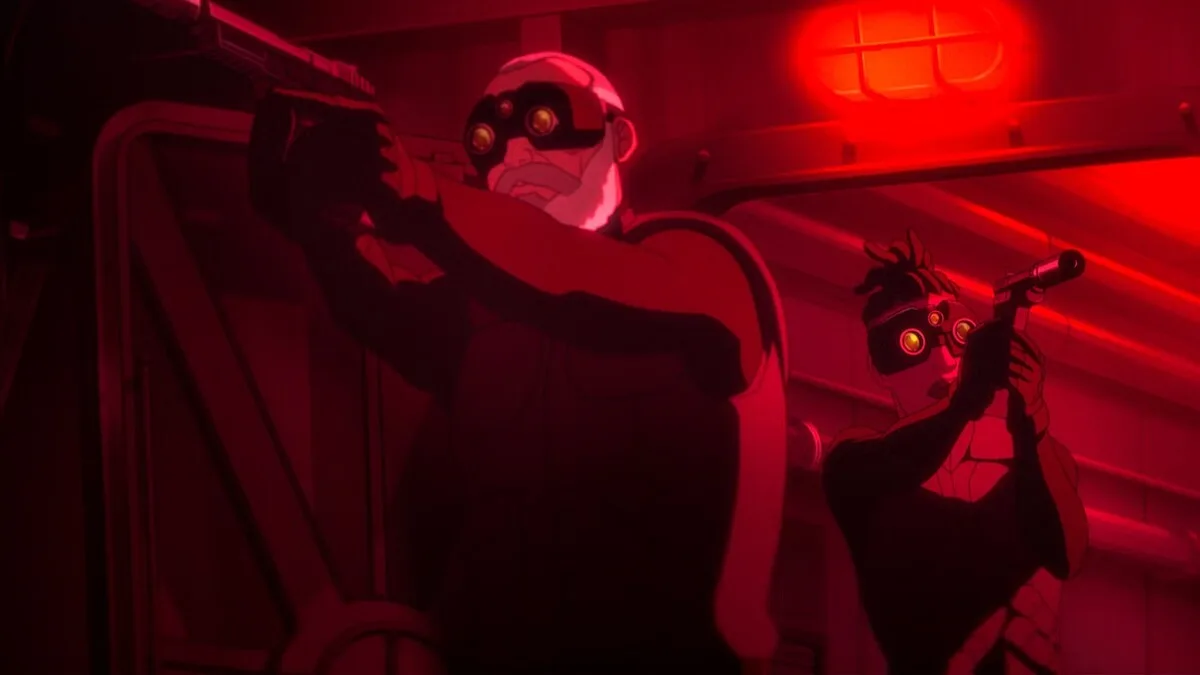
The Splinter Cell franchise has been in a catatonic state for nearly 12 years. The last time we saw Sam Fisher was in Splinter Cell: Blacklist, where he led the new 4th Echelon organization, aiming to conclude the unfinished missions of its predecessor while still operating in the field himself.
Now, we take the leap to Splinter Cell: Deathwatch, an animated series set in the universe of the games, taking place during the same period in which Sam Fisher has been absent. The series doesn’t provide much context about the events that happened since the last game, other than showing Fisher as a retired, elderly man.
The story follows Zinnia McKenna, a new operative who fails a rescue mission and, in her attempt to escape, triggers a cyberattack that compromises all 4th Echelon operations. Gravely wounded, McKenna seeks help from Fisher, leading them to uncover a dangerous conspiracy. Throughout the series, the narrative expands on Splinter Cell’s universe, recalling connections to the third game and even revisiting key moments from it.
Fans of the franchise will find Deathwatch to be a faithful and respectful tribute to Splinter Cell. At the same time, new viewers won’t be completely lost, as the show introduces enough foundational context though some prior knowledge certainly enhances the experience.
The animation adopts the familiar style seen in Netflix’s other video game adaptations: 2D backgrounds combined with 3D character models. These models are covered in textures that blend perfectly with their environments, creating a visually cohesive and impressive presentation. Netflix continues to demonstrate remarkable consistency with these adaptations, marking significant progress for Western animation.
On the audio side, Deathwatch excels with a soundtrack that perfectly blends espionage and mystery, supported by classic effects like the signature night vision goggles, which make the experience feel genuinely authentic. The voice performances are top-notch, with Liev Schreiber standing out as Sam Fisher. He captures the essence of the character with a more aged tone, while still retaining the gruff edge that Michael Ironside originally gave him.
The first season stays tightly focused on espionage, maintaining a well-balanced tone between stealth and action. The combat sequences are violent and well choreographed, but the pacing can feel slow at times. Several episodes drag to the point of being tedious, which makes it difficult to stay fully engaged especially for younger viewers.
Another minor flaw is the show’s attempt to directly connect with older games, which can unnecessarily complicate the story by referencing events that happened nearly 20 years ago. This choice feels more like a nostalgic callback than a meaningful narrative addition.
In conclusion, Splinter Cell: Deathwatch is a solid animated series with excellent technical execution and an engaging story, though it’s somewhat held back by its pacing. It’s a product clearly made with respect for longtime fans, but one that might feel heavy for newcomers.
Final Score: 4/5

